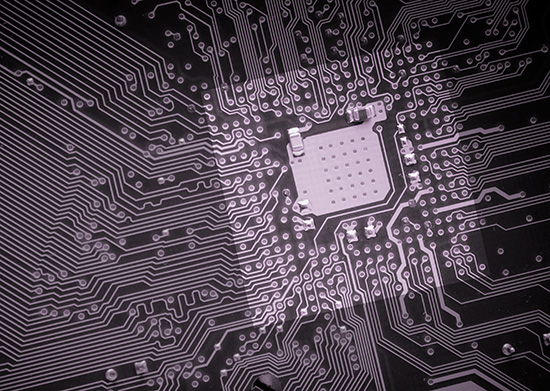EMC Question of the Week: May 23, 2022

A microprocessor in a BGA package with 300 connections is mounted on the top side of a 24-layer circuit board. Layer 2 is a solid ground plane. 3.3-volt power to the processor and other components is distributed on a plane on Layer 3. There are five 3.3-volt connections to the processor. The best place to locate five high-frequency decoupling capacitors is,
- near the DC power source
- top side, around the BGA package periphery
- bottom side, in the clear space beneath BGA
- bottom side, between each power via and ground
Answer
Generally, in this configuration, the best answer is “b.” Any current suddenly drawn by the power inputs will come from the capacitances connected through the lowest inductance first. In this configuration, the connection inductance between the five power inputs and the planes on Layers 2 and 3 would be collectively less than 0.5 nanohenries. All of the surface mounted capacitors are connected through that inductance plus their own connection inductance to the planes. So, the voltage on the planes will start to drop and the capacitors will respond to this drop. For this reason, the capacitors supplying the most current, initially, will be those with the lowest overall connection inductance to the planes. In this 24-layer board, that is the capacitors on the top side (provided those capacitors are mounted appropriately).
The capacitors on the bottom side would also respond to the drop in the plane voltage, but their collective connection inductance would be significantly higher. In addition, the vias connecting to these capacitors would be carrying high-frequency currents through the board, potentially coupling noise to planes or traces on other layers.
Nevertheless, there are often good reasons for placing capacitors on the opposite side of the board from a BGA package. Examples of this include situations where:
- the power plane is small or non-existent
- the power planes are closer to the opposite side
- the power and ground planes are not closely spaced
- the top side is crowded, and mounting to the bottom side is good enough
The way this question was posed, the top-side location was best, because capacitors on the top side would be the first to respond. In a different configuration, the answer could be different. An important thing to remember when deciding on the location of high-frequency decoupling capacitors is to pay attention to the connection inductance and avoid applying design guidelines provided by anybody who is not familiar with your particular stack-up and decoupling requirements.
Note that distance and propagation time are not factors here. At these distances, the connection inductance limits the response time far more than the propagation delay.
Have a comment or question regarding this solution? We'd like to hear from you. Email us at
